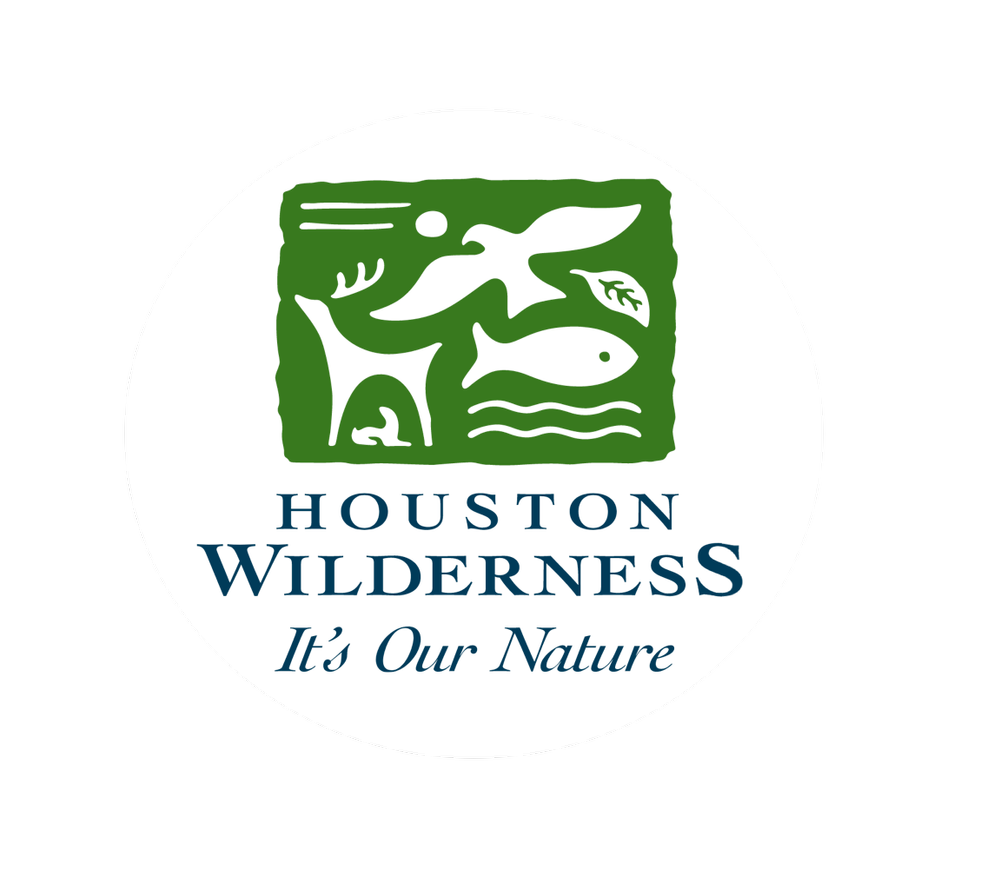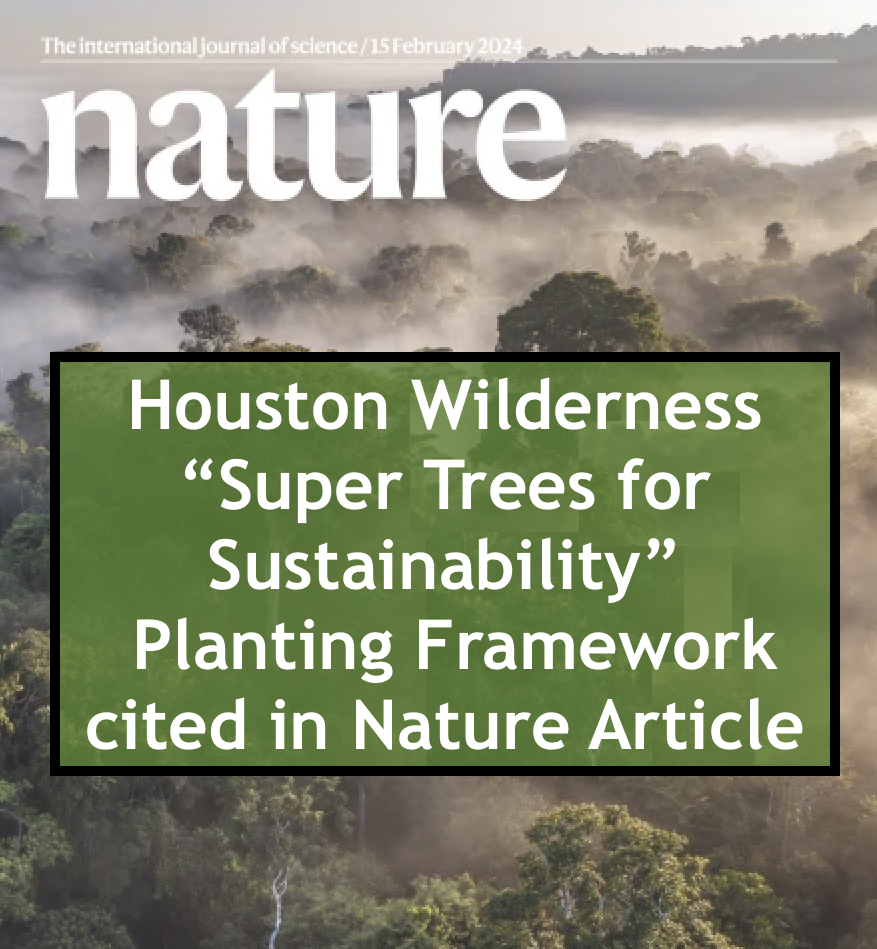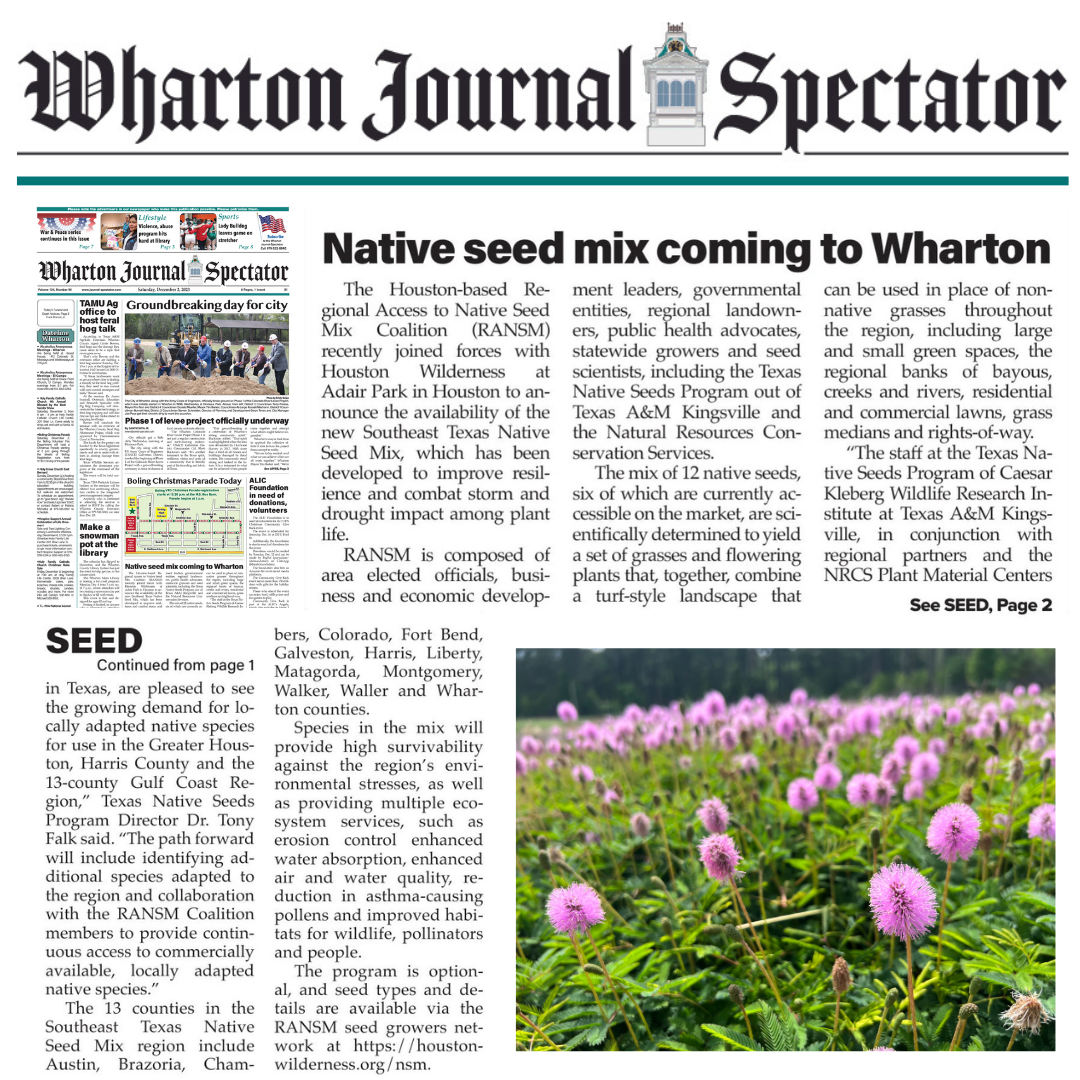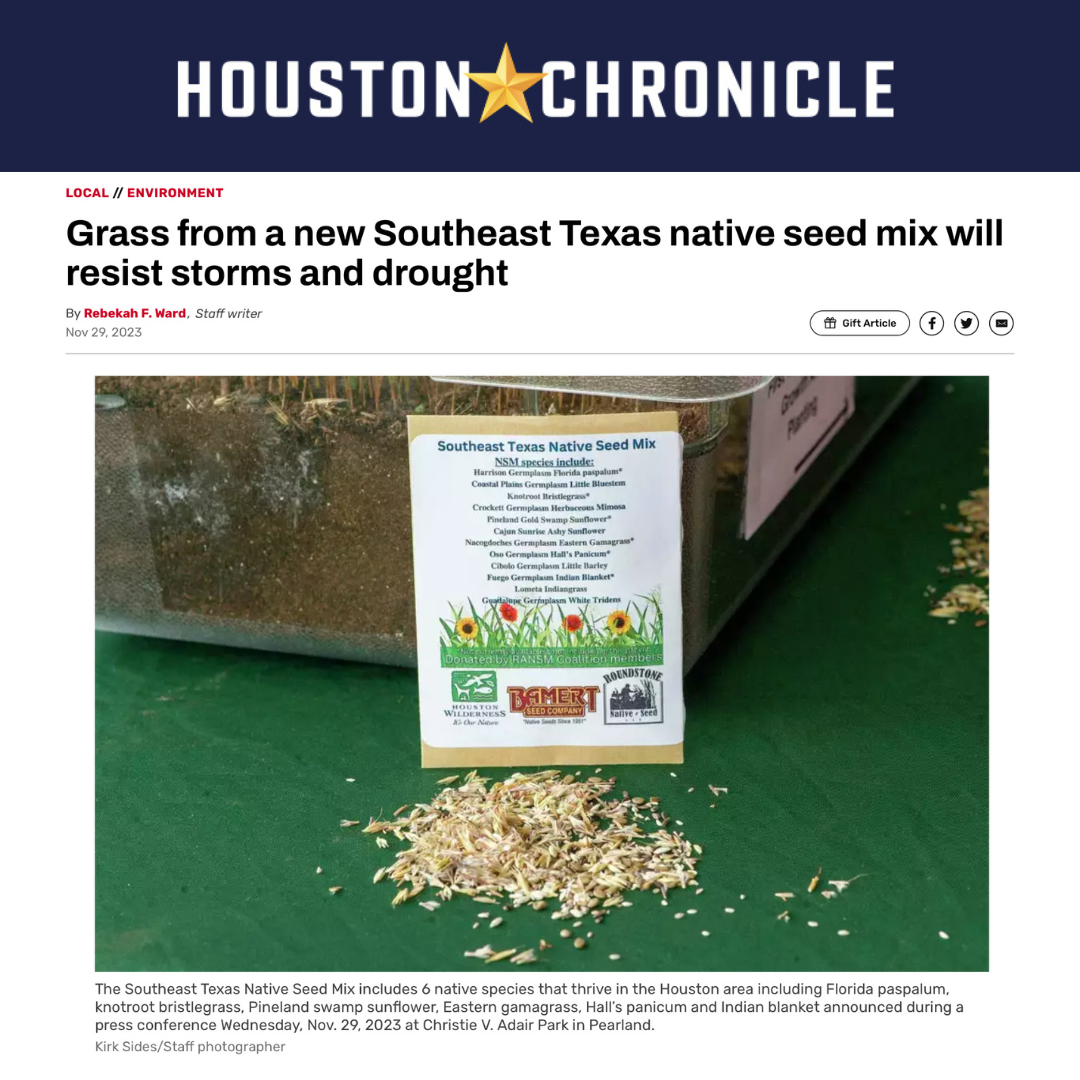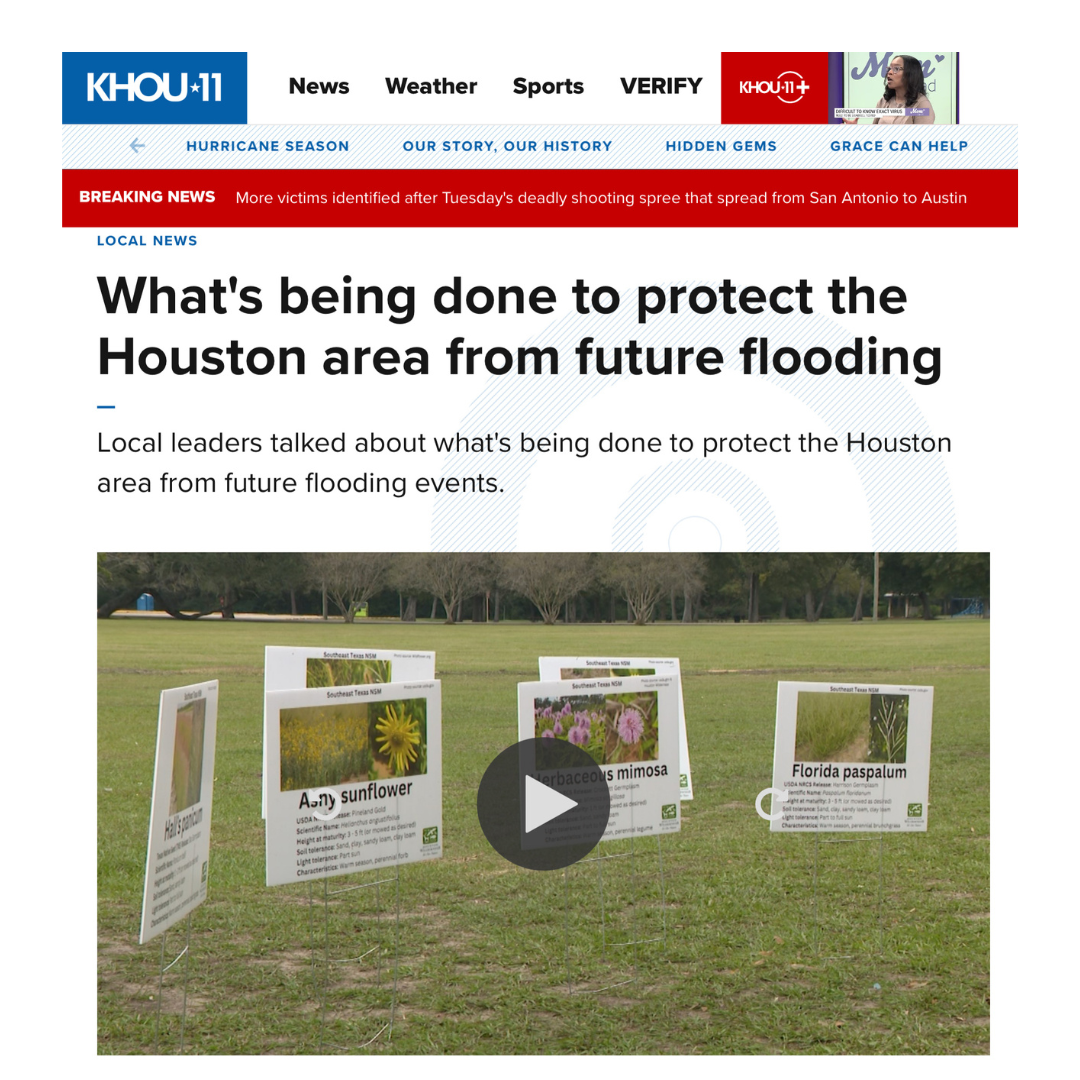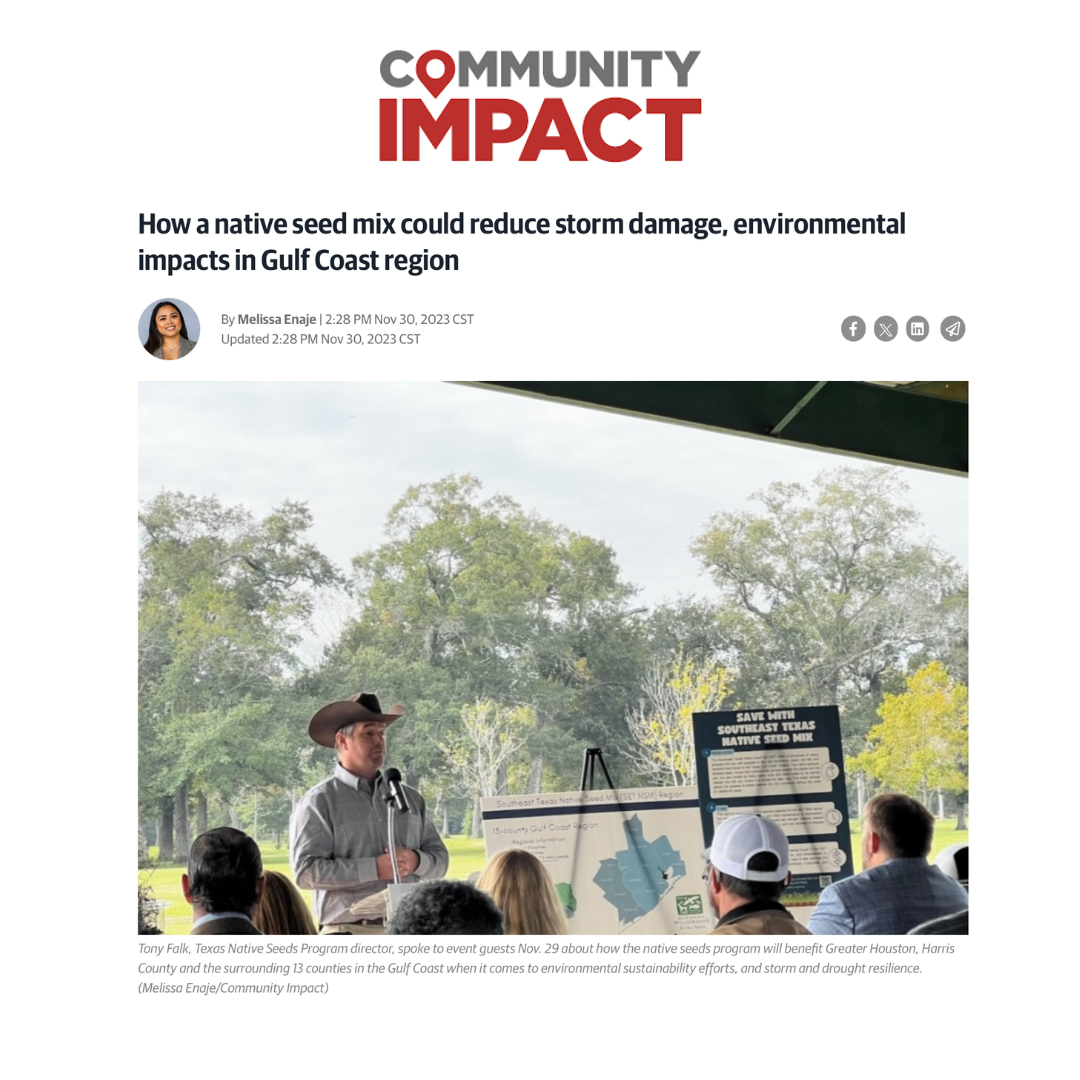Ecosystem Services
The Ecosystem Services (ES) Primer for Greater Gulf-Houston Region
Second Edition
A Six-Step guide for making nature-based infrastructure decisions based on the benefits of multiple ecosystem services
By Deborah January-Bevers, Lindsey Roche, and Lauren Harper
ABSTRACT: Natural landscapes serve our well-being in a variety of ways including water purification, flood protection, hurricane protection, carbon capture, recreation and wildlife enhancement. Identifying and understanding the benefits of services provided by local ecosystems can lead to cost-effective solutions to infrastructural and environmental problems while also creating enhanced biodiversity in urban/suburban areas. For the storm-prone Greater Houston region, the critical need to better connect the ecosystem services (ES) provided by the diverse assemblages of forests, prairies, wetlands, riparian waterways and estuaries to long-term resilience and disaster protection is taking shape following four years of increased rain events, severe hurricane destruction and sea level rise. Adding to these challenges are the region's unique, clay-rich soil composition, made up largely of vertisols and alfisols which greatly influence infiltration and runoff, especially during heavy rain events. These same soils affect environmental enhancement and recovery efforts in the region's bays and estuaries, where the dynamics of various commercial industries intersect with fisheries, coastal wetlands and marine life. Greater knowledge and understanding of the region's soil composition, by both scientists and decision-makers, can help guide the discussion and implementation of billions of dollars in post-disaster projects targeting improvements in critical ecosystem services.
This Houston Wilderness’ Ecosystem Services Primer, 2nd Edition, and related slide presentation, discusses ways for determining ecosystem services (ES) benefits and values using different established study/valuation methods depending on targeted infrastructure/project goals. In Six Steps designed to aid decision-makers in infrastructure options, this Primer looks at how the framework for comparison and valuation of the natural environment can be improved by laying out a comprehensive and systematic means to ensuring that ecosystems, and the critical services that they provide, are taken into account in policy decisions. The Six Steps include: determining the nature-based infrastructure goals, understanding the role of various ES in decision making, establishing an ES baseline for the targeted area(s), evaluating benefit relevant indicators, considering regional/local challenges, and using optimal ES valuation methods. In this way, the HW ES Primer considers the environment as a whole – bringing together land, water, air, soil and biodiversity, recognizing that their linkages provide a wide variety of services and benefits.
This broader framework allows a shift in emphasis from a focus mainly on valuing environmental damage to highlighting the value of changes in the services provided by the natural environment through use of nature-based infrastructure. Ecosystem services contribute to economic welfare in two ways – through contributions to the economy of a region and long-term resilience, and through the prevention of significant damages that inflict costs on society. With a broader focus on valuing the benefits provided by ecosystems, policy options that enhance the natural environment are also more likely to be considered that demonstrate that investing in natural capital can make economic sense. Local and regional case examples are discussed, where science-based ES benefits and valuation options were analyzed and practical nature-based solutions were implemented, often as alternatives to more structural, gray infrastructure options.
